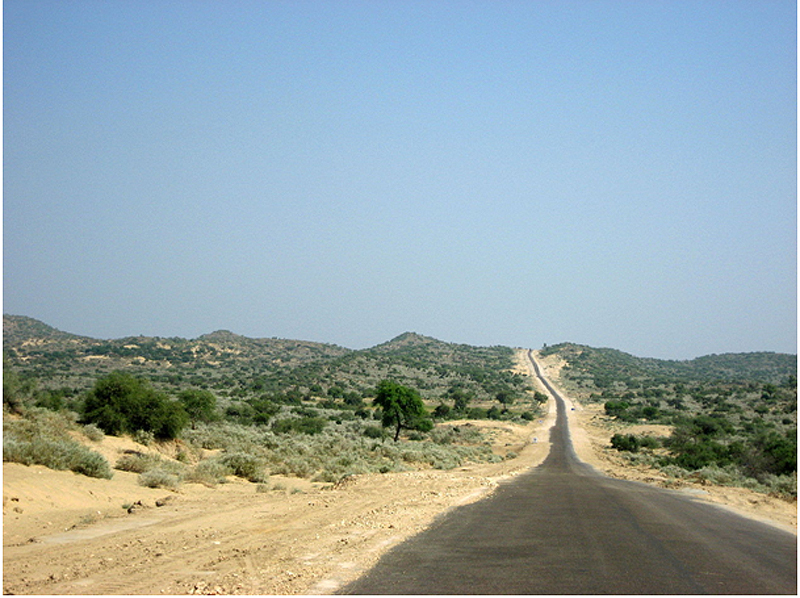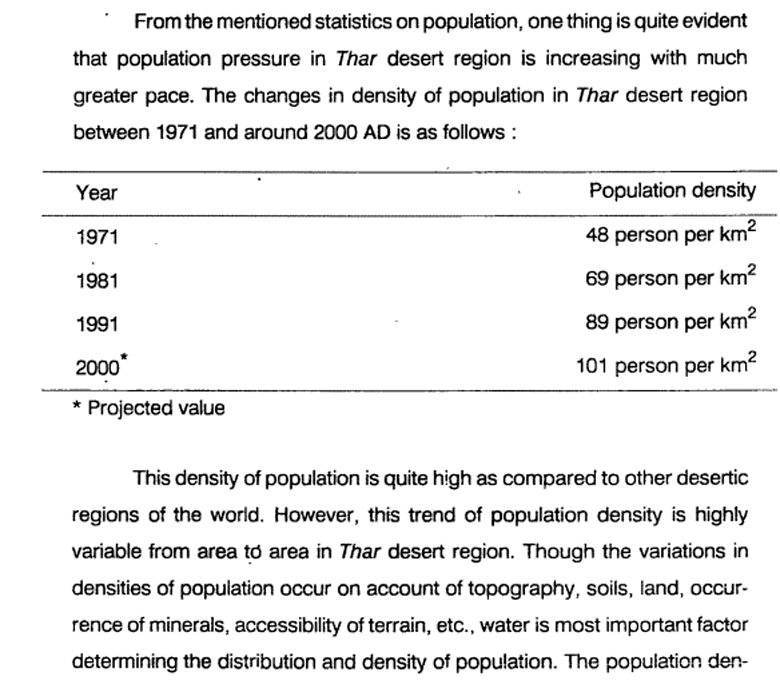Tharöknen och
klimatförändringar
Tharöknen ligger i nordvästra Indien och sträcker in i Pakistan. I förrgår råkade jag slå på vår Tv och kunskapskanalen. Det var ett program om Tharöknen, om livet här och klimatförändringar. Man fick intrycket av att klimatförändringar i form av uttorkningar var på gång. En äldre man sa att familjerna har många barn nu för tiden.
Jag undrade då vad som var sant om den torra landsända i Indien.

Vad jag fann var att stora klimatförändringar med uttorkning hade ägt rum för flera tusen år sedan.
I nutiden fann jag
att:
1.
Detta ökenområde
är världen tätast befolkade ökenområde.
2.
Folkmängden har
mer än fördubblats sedan 1970. Från 48 individer per/km2 1971 till 101
per/km2 år 2000.
3.
Regnmängderna har
inte nämnvärt förändrats sedan 1960. Se diagrammen nedan.
4.
Vissa år som det
är El Nino så uteblir regnen.
5.
Den stora
befolkningsökningen tär på områdets markresurser, betet av husdjur leder
till jorderosion.
6.
Planteringar av
görs för att motverka erosionen
7.
En stor kanal med
sötvatten, Indira Gandhi Kanalen, har grävts för att befolkningen ska få
mer sötvatten till bevattning bla.

Greening desert with
plantations of jojoba at Fatehpur, Shekhawati,
Fast som vanligt så
påstår IPCC att det ska bli torrare i denna region.
The Inter-Governmental Panel on Climate Change (IPCC, 2007) projected for more hotter days and warm nights and a reduction in rainfall in Thar region by 21st century. Such projected climate change results in shifting rainfall pattern, higher temperatures, more demand for water and will be significant driver of biodiversity with changing life cycles, loss, migration and invasion of new habitat in Thar region.
Klimatförändringar för
ett par tusen år sedan.
Over the middle and
late Holocene, increasing activity of ENSO and location of the ITCZ at
southern latitudes reduced geographic coverage of the southwest monsoon
and led to a drier hydroclimate.
https://www.sciencedirect.com/science/article/pii/S1405888X1600005X
Holocen är de senaste 10 000 åren, alltså sedan istiden slutade.
Regnmängder
Diagrammet nedan visar regnmängderna på fyra områden. Det kan skilja flera hundra mm mellan olika år. Det finns olika små lokala trender när det gäller nederbörd får vi vet.

Similarly, though
there was no significant rise in the annual rainfall of 12 arid
districts of western Rajasthan during the past century, the annual
rainfall is likely to increase in locations like Bikaner, Jaisalmer,
Pali, whereas a reduction in rainfall at locations like Jodhpur. Such
shifts in rainfall pattern of arid Rajasthan are thus likely to continue
further under the influence of projected global climate change by 21st
century and influence the cropping pattern of the region.

http://shodhganga.inflibnet.ac.in/bitstream/10603/58801/7/07_chapter%203.pdf
Stora
klimatförändringar även utan människans CO2 - utsläpp
The harshest period
of aridity ended around 7,000 years ago, and the area received
unprecedented rainfall. As the vegetation reverted to its pre-desert
lushness, the people turned to nomadic pastoralism, tending sheep and
cattle - a life-style that endures till today.
The wet stretch
lasted 3,000 years, but then semiarid conditions set in - and man was
able to adapt to that too. Misra sums up: "The Thar Desert was created
because of climatic and hydrological changes, and man's role has been
minimal. In fact, man has adapted very well to the semiarid conditions."
Misra's advice about
intensive irrigation is all the more timely because the Thar is now
supporting an exploding population of around 10 million. The grazing
lands are shrinking and the scanty - and rare - rainfall encourages
piecemeal agriculture in areas where the sand dunes have stabilised over
several thousand years. This loosens topsoil and aids wind erosion,
adding to the damage caused by overgrazing. As Misra warns: "If we try
to mix unirrigated agriculture and concentrated grazing, that spells
doom."
Warnings:
Conservationists abroad hold views that reinforce the Didwana team's
findings. In his book Losing Ground, Erik P. Eckholm points out that
north-west India is the world's most densely populated arid zone.
Unplanned and unirrigated cultivation on the one hand, and shrinking
grazing lands on the other, says Eckholm have seriously affected "the
productivity of an arid area covering more than a fifth of India, an
area larger than France".